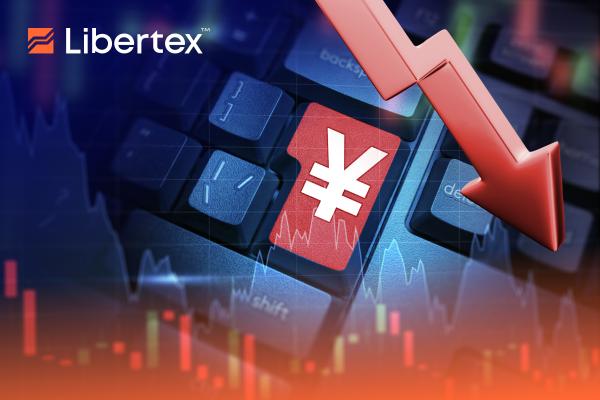With all the excitement in the European and US currency markets over the past couple of years – from the historic Euro-USD parity achieved in late 2022 to yoyo-ing Treasury bond yields – it's understandable that many Westerners' attention hasn't been on Asia. However, something historic in its own right has been playing out in the Far East all the while.
Unbeknownst to many, the Japanese yen has been falling quietly yet precipitously against the US dollar (and other majors) since 2021. In fact, the yen has now lost almost a third of its value, and, at its current level of 151.17 (27/03), USD/JPY hasn't been in this position for over 30 years. Even the BoJ's momentous decision to hike interest rates for the first time since 2007 last week didn't help stop the rot. The yen actually weakened further following the news.
The decline did stabilise, however, after Finance Minister Shunichi Suzuki said he would not rule out any measures to cope with the yen's woes, yet fears remain that any intervention by the Japanese central bank will inevitably be insufficient given the near 350 bps difference in the US and Japanese 10-year bonds. So, what is behind this epic downtrend in the national currency of one of the world's major economies, and how is it likely to play out long-term in the markets?
A long time in the making
It's a well-known fact that Japan has had some of the lowest interest rates in the world for decades. Indeed, until this recent increase, the BoJ's funds rate had been in negative territory for some time. Coupled with an aggressive QE policy that intensified during the pandemic, this devaluation of the yen was practically axiomatic. And despite wage growth suggesting the inflation can be managed, the low yields in the local bond market have forced major Japanese investors to keep about $3 trillion in foreign bonds and yen trades, which could otherwise be repatriated.
Unfortunately, it's hard to see how the Bank of Japan can compete with percentage yields above 4% without bankrupting the nation. Another potential pressure on the yen in a higher rate environment is the potential reduction in carry trades, a process by which large-volume traders purchase yen with the intention of investing the proceeds of the trade in higher-yielding currencies. For now, the yen is still the most attractive of the majors for this purpose. However, if rates continue to rise, there could be a further reduction in yen inflows going forward. Much will depend on whether we see a move further up towards 155 or back below the key support of 150, where we would expect to see long positions on the yen begin to flood in.
Look at the positives
As we've already touched upon, the Japanese labour market is strong, which means it can support some of the inflation generated by ultra-low rates, but not indefinitely. It appears as if the rise above 150 in the yen's pair with the US dollar has been taken as a watershed moment by the BoJ, as Finance Minister Suzuki has now promised to take "decisive steps" to strengthen the currency. Indeed, 151.94 was the point at which the central bank began actively purchasing yen back in October 2022, and it's no great leap to assume this is what the BoJ will begin doing again soon. It's hard to imagine that this policy won't result in a stronger yen, particularly if coupled with additional modest rate increases over the rest of 2024.
As with all things, the key will be striking the perfect balance between keeping the national currency under control and minimising the negative effect on the domestic credit market, where the extended period of ultra-low rates has seen huge amounts of borrowing that could leave debtors overleveraged if hikes are too sharp. Another important balance that must be borne in mind is that of imports and exports. The weaker yen has made imported products more expensive for the local market, but Japan is a huge exporter of high-value goods like cars and electronics, which have become much more attractive against this backdrop. For this reason, the BoJ will be hoping to hold USD/JPY somewhere in the 140–150 range.
Trade forex and more CFDs with Libertex
With a variety of underlying asset classes on offer – from stocks, commodities and ETFs to bonds, crypto and, of course, traditional forex – with Libertex you can trade long or short CFD positions with leverage. For instance, Libertex can offer competitive trading options in CFDs on forex pairs such as USD/JPY and EUR/JPY, as well as a whole host of cross rates. For more information about Libertex's offering or to create an account of your own, visit www.libertex.com/signup today!


